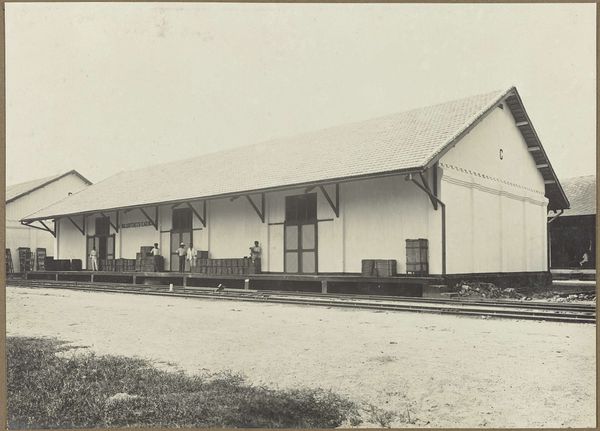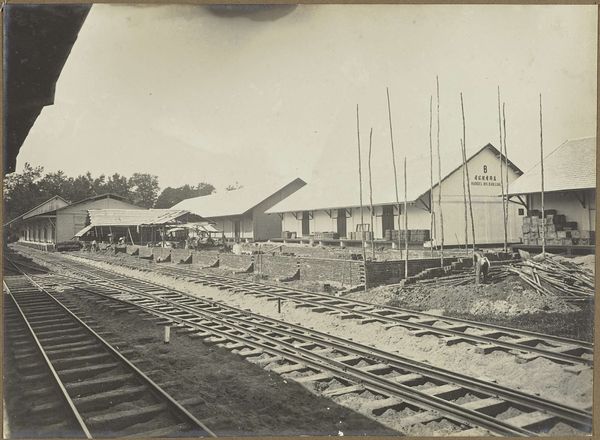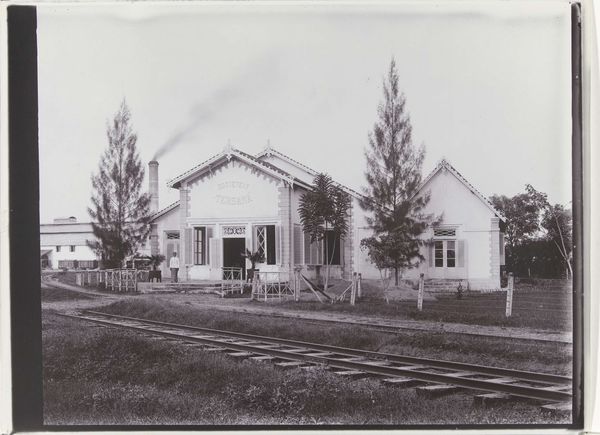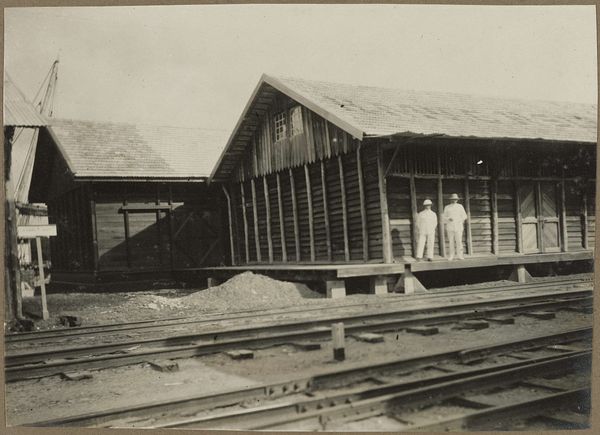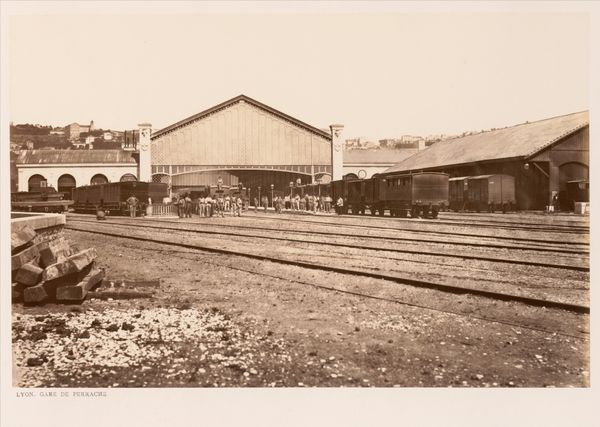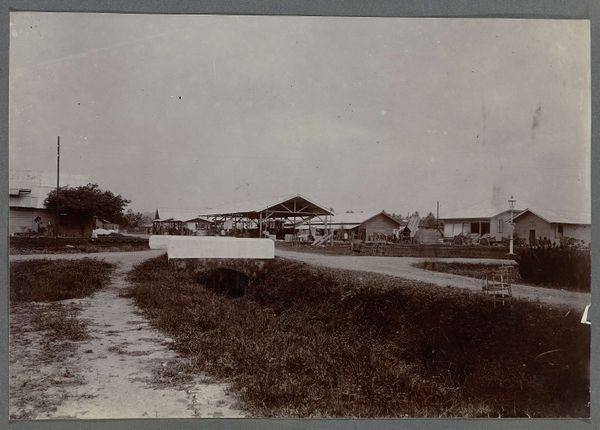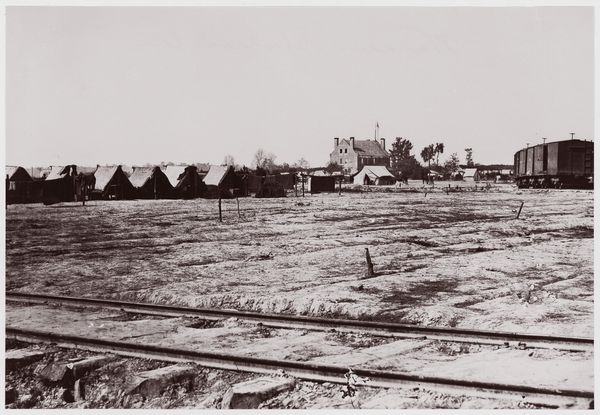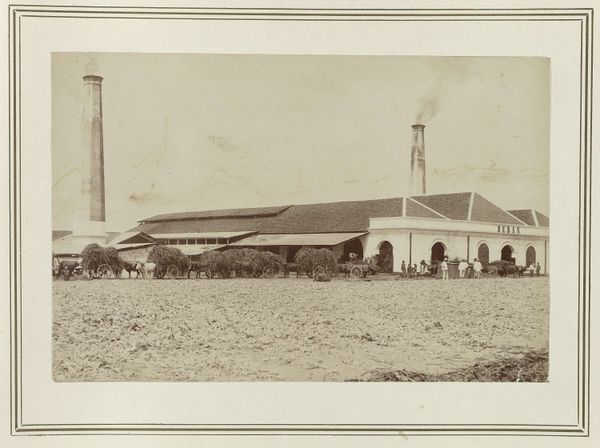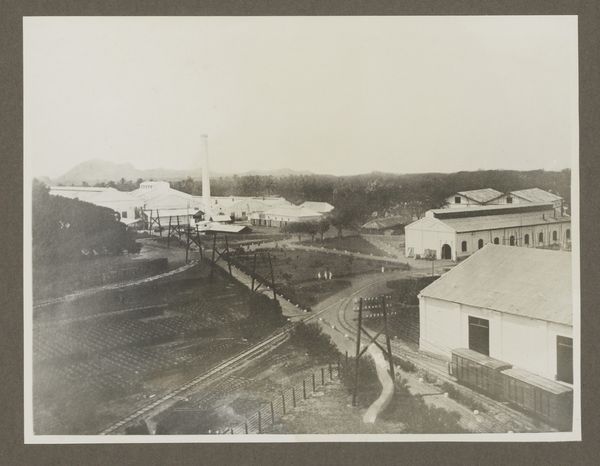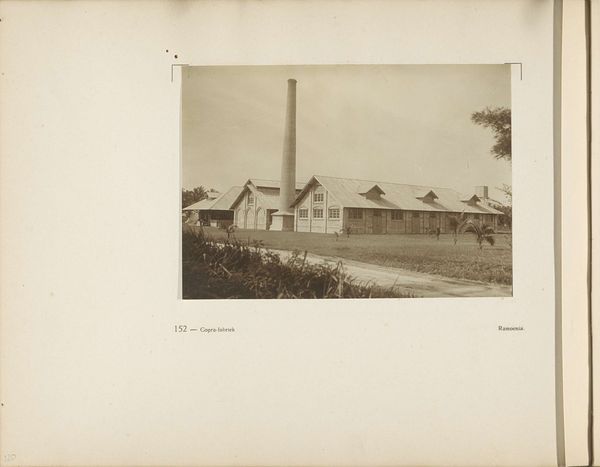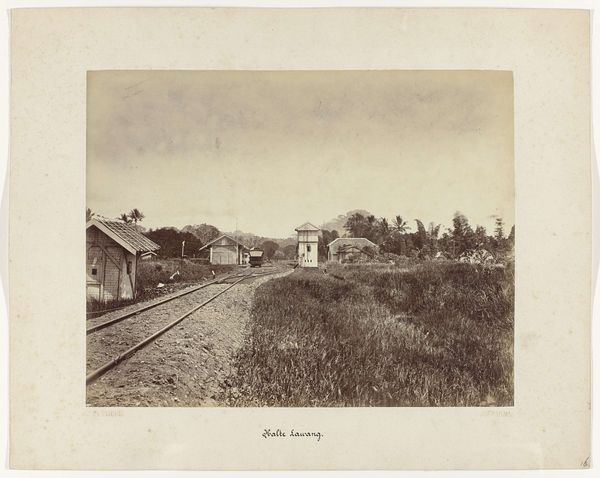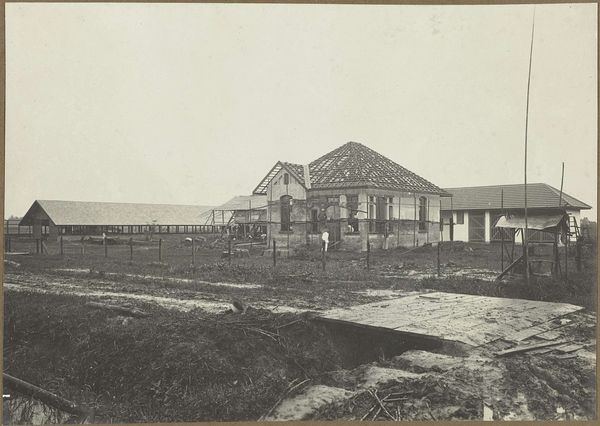
print, photography, gelatin-silver-print
#
aged paper
#
pictorialism
# print
#
old engraving style
#
landscape
#
photography
#
historical photography
#
gelatin-silver-print
#
19th century
#
cityscape
Dimensions: height 150 mm, width 210 mm
Copyright: Rijks Museum: Open Domain
Editor: Here we have Kassian Céphas’ "Station van Tugu," a gelatin-silver print from 1886-1887, currently housed at the Rijksmuseum. There's something both serene and industrial about it; the long tracks are incredibly still, but obviously suggest bustling activity. What strikes you about this photograph? Curator: It's precisely that tension between stillness and industry that fascinates. Considering Céphas was active in the Dutch East Indies, now Indonesia, this photograph isn't just a pretty cityscape; it's a potent document of colonial infrastructure. The railway system served primarily to extract resources and facilitate Dutch administration. So, when you see this "serene" image, consider who benefitted from this technology, and whose labor built it. Does knowing that shift your interpretation? Editor: Absolutely. That makes the almost sterile emptiness of the platform even more pointed. It feels less like an innocent landscape and more like a stage awaiting the next act of colonial enterprise. Curator: Exactly! And think about the role of photography itself. It wasn't a neutral observer, but a tool of empire. Images like this circulated in Europe, shaping perceptions of the colony as a place of order, progress, and potential profit, while often obscuring the harsh realities of colonial life. Editor: So, it’s propaganda, in a way? Making colonial endeavors seem less exploitative than they really were. Curator: In a way, yes. Or at least, a carefully curated image meant to project a specific vision of colonial control. It's a reminder that what we see is never just a reflection of reality, but always a carefully constructed representation with its own agenda. Editor: That gives me a lot to think about. I initially saw a quiet landscape, but now it feels like a much more complex, politically charged image. Curator: Precisely. The politics of imagery are always at play; a photo of a train station can tell stories about power, control, and the construction of colonial narratives.
Comments
No comments
Be the first to comment and join the conversation on the ultimate creative platform.
